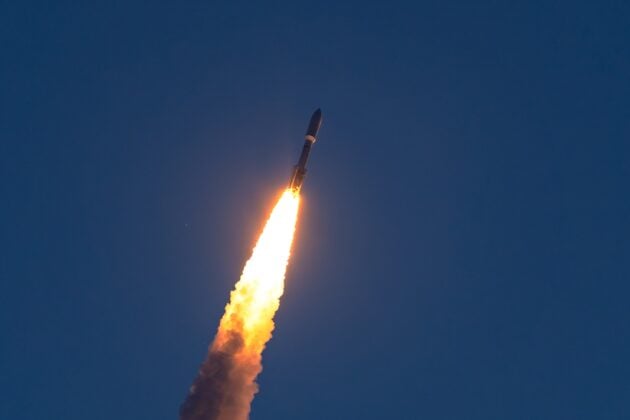
The U.S. Defense Advanced Research Projects Agency (DARPA), the branch of the U.S. Department of War charged with developing new technologies for the military, has issued a new solicitation seeking proposals for onboard space surveillance algorithms capable of tracking small objects in deep space, including the cislunar region between Earth and the Moon.
The initiative, called Track Before Detect for Deep Space (TBD2), is aimed at developing algorithms for use on space-based sensors to detect and track objects as small as one meter in size at ranges of up to 2 million kilometers.
According to the Broad Agency Announcement (BAA) released by DARPA, the TBD2 program will address a growing challenge in space situational awareness: the ability to detect, discriminate, and track non-cooperative resident space objects (RSOs) beyond geosynchronous Earth orbit (GEO). These include small spacecraft, debris, and unregistered satellites operating in cislunar space.
“TBD2 seeks to develop and demonstrate real-time onboard processing for wide field-of-view sensors operating beyond GEO,” DARPA said in the announcement. “The effort is expected to demonstrate improved sensitivity and tracking performance compared to conventional detect-then-track methods.”
DARPA is particularly interested in algorithms capable of executing “track-before-detect” (TBD) approaches on compact computing platforms onboard satellites, leveraging commercial-off-the-shelf (COTS) electro-optical sensors. Unlike traditional detection architectures that rely on ground-based post-processing, TBD2 aims to reduce data transmission needs and latency by enabling real-time tracking directly in orbit.
The program includes two technical areas: one focused on developing the tracking algorithms themselves, and another on building an onboard prototype demonstration system for a future flight experiment. Awardees may work in one or both areas.
The agency notes that the TBD2 system should be able to maintain reliable tracks even in cluttered scenes, accounting for sensor motion, parallax effects, and variable signal-to-noise conditions. Additionally, the algorithms must accommodate long integration times and a lack of persistent reference stars in deep space observations.
DARPA plans to conduct the demonstration using a space-based platform positioned beyond GEO, although specific mission architecture and orbital parameters will be determined in later stages. The prototype payload is expected to weigh under 50 kg and use less than 150 watts of power, with onboard processing time limited to approximately 10 minutes.
This effort builds on DARPA’s broader interest in developing autonomous space domain awareness (SDA) capabilities amid growing concerns over deep space militarization and increased activity in the Earth-Moon corridor. China, Russia, and other nations are exploring lunar missions and positioning assets beyond GEO, raising the stakes for U.S. monitoring efforts.
Proposals for TBD2 are due by January 17, 2026. Selected performers may receive Phase 1 awards of up to 18 months, with optional follow-on work for demonstration flight readiness.